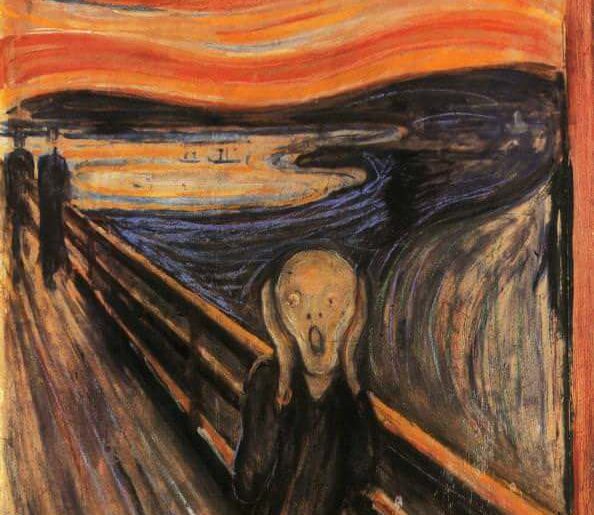The scream is a painting that is known worldwide for how adeptly it captures mental anguish. It is a masterpiece for sure, but what’s more interesting to study than the actual painting is the extremely complex mind of the artist who created it. As time goes by, the awareness around mental health issues keeps increasing, and this artist’s works start to appear more and more relevant. So, if you’re going through something and looking for an artist who will make you feel understood, Edvard Munch would be the one.
With around 1789 paintings created during his career span of sixty years, Edvard Munch was a Norwegian artist who was introduced to the harsh realities of life very early into his life. Having lost his mother when he was only five and eldest sister at 14, both from tuberculosis, Munch discovered the feeling of loss.
In a family cursed to ill health, Munch too had a weak immune system which led him unable to attend school for long periods of time, invoking a sense of isolation within him. At home, his father is said to have read him ghost stories by Edgar Allan Poe, which ended up instilling a sense of anxiety in the vulnerable mind of the young artist. The keen passion for art, which the boy seeked shelter in, was discouraged by his one remaining parent, his father Christian Munch who also suffered from phases of anger and depression. Soon, Munch’s sister was diagnosed with schizophrenia and he lost his father as well.
“Illness, insanity, and death were the black angels
that kept watch over my cradle
and accompanied me all my life.”
The early years of his life left a tremendous mental impact upon the artist and his works majorly explored psychological themes of sickness, death, isolation, mania, fear, melancholy, and much more. Munch believed
“There should be no more pictures of interiors, of people reading and women knitting.
There would be pictures of real people who breathed, who suffered, felt, loved.”
These works were mainly biographical and expressed the artist’s own state of mind and surely enough, Munch could not remain unscathed and suffered a nervous breakdown in 1908.
Munch spend eight months in the hospital and emerged as an optimistic being after his treatment and his works also shifted from their representation of chaotic issues of the mind to the scenery of the simple Norwegian landscape. The Sun (1912), Spring Ploughing (1916), and Bathing Man (1918).
Therefore, we would like to conclude that the present requires us to study courageously expressive artists like Edvard Munch who not only opened up but splattered his canvases with his bold truth about personal struggle with mental health. His transformation also sets an example for his admirers and proves that seeking help and treatment can turn around a person’s life. We hope that ending this article with his painting of The Sun leaves our readers with an inspired outlook in their own journey.
Written by Ravgun Kaur






